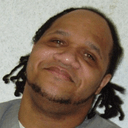
On October 14, 2022, the Death Penalty Information Center released Deeply Rooted: How Racial History Informs Oklahoma’s Death Penalty, a report placing Oklahoma’s death penalty system in historical context. Below are some of the important facts people should know as the state continues its 25-person execution spree.
- There have been racial disparities in executions since before Oklahoma was granted statehood.
The earliest recorded execution in Oklahoma was in 1841. Of the 39 people executed in the 19th century, 31 (79%) were Native American men and 6 were Black men. The first recorded execution of a white person was in 1899.
Since 1976, 41% (48/117) of the people Oklahoma has executed have been people of color. Black people make up the majority of the people of color executed in the modern era of the death penalty (37/48).
Oklahoma has a history of defying Supreme Court racial justice decisions.Oklahoma has a long history of defying U.S. Supreme Court decisions that sought to promote equality before the law and the sovereignty of Native American people. After the Supreme Court ordered Oklahoma to provide Ada Lois Sipuel Fisher — a Black woman rejected from the University of Oklahoma College of Law because of her race — access to law school, the state legislature created a new “law school” exclusively for Sipuel Fisher in a State Capitol Senate room. The “school” had three instructors and no plan of study. Oklahoma reversed course only after Sipuel Fisher’s attorneys brought the matter back to the Supreme Court and the Attorney General expected the state would lose.
Most recently in McGirt v. Oklahoma, the Supreme Court held that Oklahoma lacked jurisdiction to prosecute Native American people for crimes committed on tribal lands, which included much of eastern Oklahoma. On the same day it ruled in McGirt’s favor, the Court retroactively applied its holding to Patrick Murphy’s pending case, in which Murphy, a Muscogee man, was challenging Oklahoma’s jurisdiction because his crime was committed on tribal land. Deviating from the Supreme Court’s holding in Murphy’s case, the Oklahoma Court of Criminal Appeals refused to retroactively apply McGirt to other cases.
The 25 people Oklahoma scheduled for execution disproportionately represent the most vulnerable populations.The men scheduled for execution over the next two years are overwhelmingly members of highly vulnerable populations, rather than the most morally culpable offenders. Nearly all face one or more significant vulnerabilities, including serious mental illness, intellectual deficiencies, brain damage, and chronic childhood abuse and neglect. Seven of the ten Black men scheduled for execution were 25 years old or younger at the time of their crime, including three who were 20 or younger.
Most of the men have been diagnosed with serious mental illnesses, including schizophrenia, bipolar disorder, and post-traumatic stress disorder. At least eight have documented evidence of brain damage. One of the men, Michael Smith, has provided courts extensive documentation of a lifelong disability but Oklahoma has denied him a hearing to present that evidence.
The men scheduled for execution have been subjected to a multitude of adverse childhood experiences, including serious physical, emotional, and/or sexual abuse. Several have significant evidence of innocence. Seventeen of the 25 were sentenced to death in Oklahoma or Tulsa counties, both of which are national outliers as a result of their voracious execution rates.
On average, capital cases are over three times more expensive than non-capital cases in Oklahoma, not including the differences in the costs of keeping someone on death row.Conservative estimates place the average cost of an Oklahoma death penalty case at approximately $161,000, even before considering the cost of incarceration after conviction. Non-capital cases cost $51,000 per case, on average — 3.3 times less than death penalty cases. State capital appeals drive much of the differences in costs as these appeals are 5.4 times more expensive than non-capital appeals. The state also spends twice as much money per person per day housing people on death row compared to the estimated cost of housing people sentenced to life in prison.
If the victim is white, there’s a greater chance the defendant will be sentenced to death, regardless of the defendant’s race.Preferential valuing of white victims affects which murders get solved and who is sentenced to death. A study of Oklahoma homicides from 1990 – 2012 found that only 3% of homicides with known suspects resulted in death sentences and that the race of the victim played a statistically significant role in the outcome. The odds that a person charged with the murder of a white female victim would receive a death sentence were 10 times higher than if the victim was a minority male. Homicides involving minority male victims were the least likely to result in a death sentence.
While 56% of murder victims in Oklahoma are white, 74% of death sentences imposed for homicides from 1990 – 2012 and 75% of all executions in the past half century involved white victims. Of the 25 executions scheduled over the next two years, 68% involve white victims.
Half of all death sentences from Oklahoma County and Tulsa County have been reversed or resulted in commutations or exonerations. Prosecutorial misconduct has contributed to many reversals and exonerations.The prolific use of the death penalty in Oklahoma’s outlier counties has also led to a high reversal rate. Half of all death sentences imposed in Oklahoma and Tulsa counties between 1972 and January 1, 2021 have been reversed in the courts or have resulted in a commutation or exoneration, making a death sentence no more statistically reliable than a coin toss.
The Death Penalty Information Center has identified at least 30 instances of prosecutorial misconduct resulting in reversals or exonerations in Oklahoma. Eleven of those cases were prosecuted in Oklahoma County, and four were prosecuted in Tulsa County.
Native American people have been uniquely affected by the death penalty in Oklahoma.Thirty-seven Native American men and women have been sentenced to death in Oklahoma, more than in any other state. Oklahoma has also executed seven Native American people, including the only Native American woman executed in the U.S. These seven executions account for 35% of all Native American executions (7/20) in the country since 1976. Two people currently scheduled for execution, Clarence Goode, Jr. and Alfred Mitchell, are Native American.
Oklahoma County and Tulsa County are national death penalty outliers.Oklahoma County has imposed the most death sentences of any county its size (population between 750,000 – 1,000,000) in the United States and has carried out more than 2.5 times the number of executions of any other comparably sized county. Oklahoma County’s per capita execution rate of 5.6 people per 100,000 population is more than triple (3.3 times larger) that of the second ranking county its size (St. Louis County, at 1.7 per 100,000 population).
Tulsa County is tied with Montgomery County, Texas as the most prolific executioner of any county between 500,000 – 750,000 in size and has the second largest per capita execution rate at 2.6 per 100,000 population.
Ten people have been exonerated from Oklahoma’s death row, and they spent a combined 97 years in prison. There are racial and geographical disparities in exonerations.Half of Oklahoma’s exonerees are Black. Perjury or false confession contributed to four of the five Black exoneree’s wrongful convictions. Oklahoma County is responsible for half of all exonerations in the state; the county has produced more capital exonerations than all but four other counties in the U.S.
The median number of years spent on death row before exoneration was ten years for Black defendants, compared to six years for white defendants. Sixty-two years have been lost in prison to wrongful capital convictions in Oklahoma County alone.
A bipartisan commission found that Oklahoma’s death penalty system created “unacceptable risks of inconsistent, discriminatory, and inhumane application of the death penalty.” Oklahoma has enacted “virtually none” of the suggested reforms.In 2017, a bipartisan commission including former prosecutors, defense lawyers, judges, citizens, crime victim advocates, and law professors released an extensively research report about Oklahoma’s death penalty system. The commission provided suggested reforms for every aspect of Oklahoma’s death penalty system and unanimously recommended a moratorium on executions until reforms were made. In discussing the decision to recommend a moratorium, the commission wrote that “disturbing” findings “led Commission members to question whether the death penalty can be administered in a way that ensures no innocent person is put to death.” Five years later, Oklahoma has enacted “virtually none” of the reforms.
Download the full report here.



